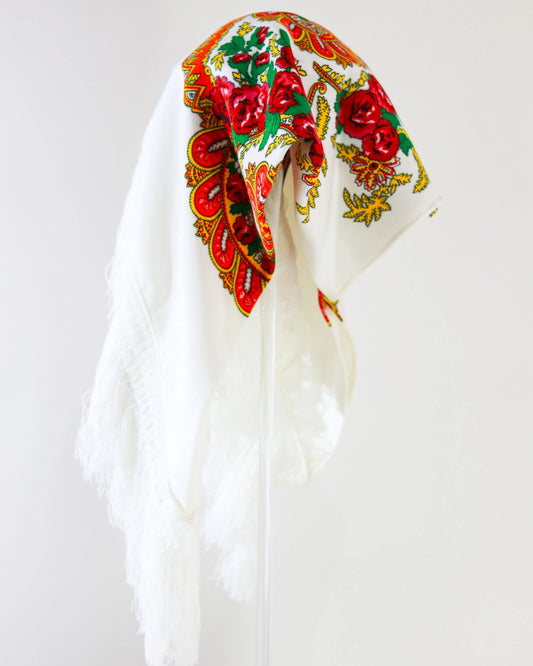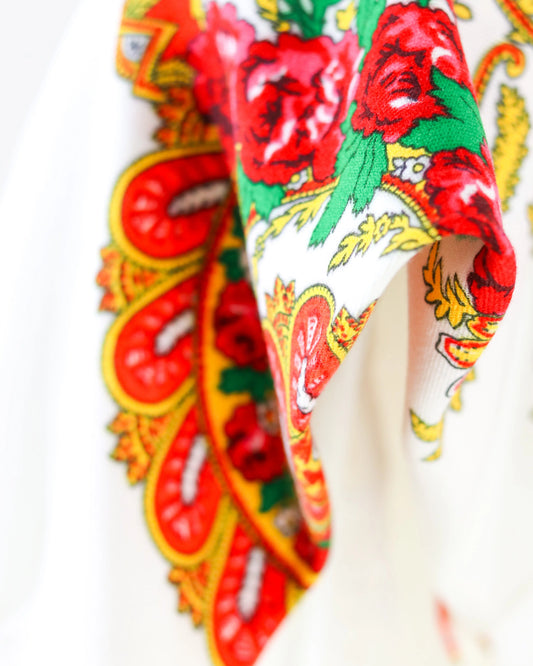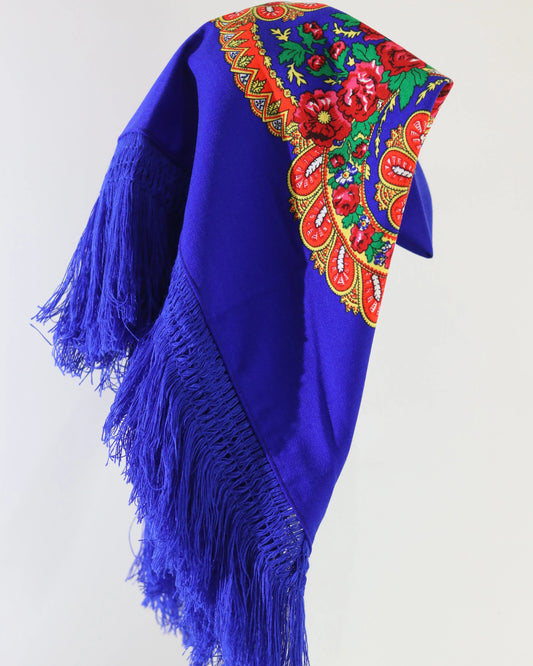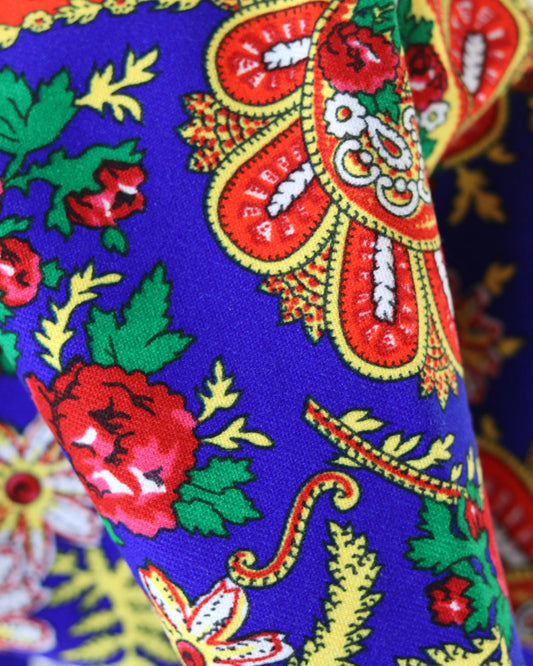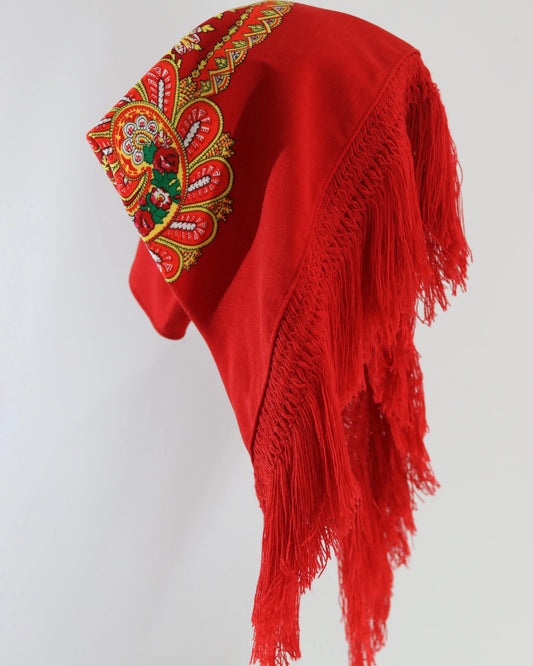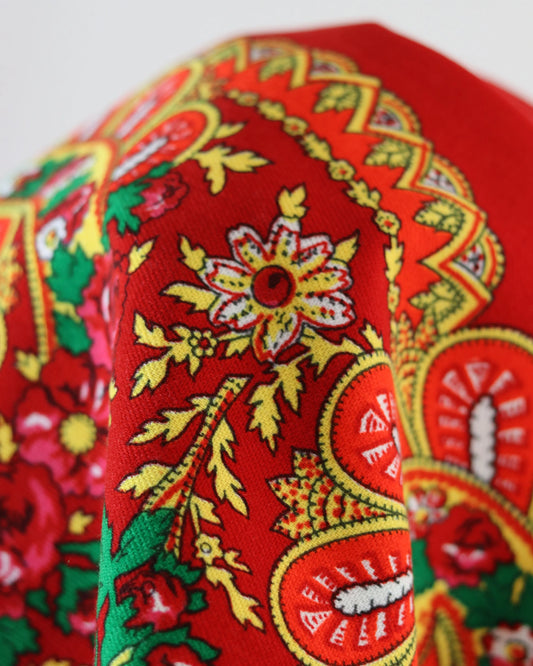The stewardesses, ambassadors of Viana culture and tradition
When you hear the beating of the drums in Viana do Castelo, one image emerges: a sea of starched skirts, velvet vests, and glittering gold. Amidst the glitter and music, figures stand out, giving a face to the local identity. These are women carrying ancient stories, faith, skill, and an unmistakable aesthetic.
Every August, the city transforms. But the symbol doesn't live only on these days. It lives on in the daily gestures of those who preserve the art, devotion, and language of a community that learned to celebrate without forgetting its origins.
What does it mean to be a steward?
The word refers to someone who takes care of things, someone who is a guardian. In many places in Minho, the stewardess assumed responsibility for church property and festive tasks. In Viana do Castelo, the term gained public prominence and a female face, becoming synonymous with a prominent figure in the rituals and protocol of the festivals.
Being a butler isn't just about wearing a costume. It's about accepting a social responsibility, representing the neighborhood, the parish, the family, and the city. It's about learning the rules of posture, how to place the handkerchief, and the correct order of the golden threads.
Today, many butlers are young women who balance studies and work with rehearsals, sewing sessions, embroidery demonstrations, and a busy schedule of cultural events. They carry with them a legacy and a commitment.
A story made of devotion and representation
The August pilgrimage, dedicated to Our Lady of Agony, has established a calendar over the centuries, with its own parades and processions. Within this cycle, the presence of the mordomas took on a public and highly visible form.
Throughout the 20th century, the growing number of participants and the affirmation of Minho's identity gave the mordomas a prominent place. The parade dedicated to them became a landmark, paving the way for the recognition of Viana's costumes and gold as living heritage.
There's also a dimension of devotion. Being a steward implies a relationship with the parish and the image it celebrates. It involves service, with a ceremonial brilliance, but also behind-the-scenes work, made up of meticulous preparation and hours of learning.
The costume that speaks for itself: codes and symbolism
Viana's attire communicates without words. Colors, prints, fabrics, and accessories create a visual grammar that identifies eras, parishes, and occasions.
Most common elements:
- Velvet vest with embroidery and applications
- Linen shirt with lace and detailed details
- Starched skirt, often in bright colors, with a worked hem
- Embroidered apron
- Headscarf, well tied and adjusted
- Lace stockings
- Slippers
- Pocket and other small accessories
Nothing is random. The placement of the scarf, the arrangement of the hair, the color combination, and even the way the apron is held have rules. Butlers know that memory also resides in the details.
Essential parts chart
| Part | Typical materials | Function in the set | Authenticity notes |
|---|---|---|---|
| Vest | Velvet, hand embroidered | Structure and nobility of the costume | Traditional embroidery, floral motifs |
| Shirt | Linen, lace, labyrinth | White base that highlights the gold | Worked sleeves, delicate cuffs |
| Skirt | Wool or cotton, starched | Movement and grandeur | Bars with recognizable design |
| Apron | Embroidered fabric | Finishing and contrast | Viana embroidery, regular stitch |
| Tissue | Cotton or silk | Identity and modesty | Correct fold, well-positioned tip |
| Socks | Cotton, lace | Harmony and care | Fine and uniform design |
| Gold | Filigree, chains, pieces | Symbol of fortune and affection | Traditional pieces, good proportion |
Storytelling gold
Viana gold isn't just adornment. It's layers of memory and affection, made up of pieces passed down from generation to generation. In the loops worn around the chest, hearts, crosses, ribbons, braided threads, and promise medals are recognizable. Each piece has a name, a technique, and emotional weight.
Filigree, with its delicacy, is a highlight. It requires trained hands, patience, and an eye capable of guiding the metal along exquisite paths. There's a gold ethic, learned at home and from local jewelers, that respects the proportion and elegance of the whole.
The butler knows it's not just about shine. It's also about a message. The heart is a symbol of affection and devotion. The crosses represent faith. The heavier chains are part of an aesthetic that, used masterfully, remains balanced and imposing.
Festivals, calendar and rhythm of the city
Viana do Castelo comes to life in a program that spans several days in August. There are moments that attract visitors from all over the country and abroad, giving the mordomas a platform.
- Parade dedicated to stewardesses, with hundreds of women in costume
- Religious processions, with orderly and solemn participation
- Ethnographic processions that show crafts, dances and songs
- Serenades, festivals and gatherings of musicians
- Thematic exhibitions, guided tours and craft demonstrations
In each of these moments, the public gaze finds in the mordomas the synthesis of faith, applied art, and a sense of community. The city vibrates with applause and the rhythm of accordions.
Ambassadors of a living culture
The term "ambassador" is often used to refer to someone who represents a place outside their home. Mordomas perform this role naturally. They participate in events in Portugal and abroad, host delegations, appear in cultural and tourism promotion campaigns, and collaborate with museums and schools.
Their presence helps to cement images of Viana. The costume is a powerful calling card, opening up conversations about history, crafts, gastronomy, landscape, and ways of life. It's a thread connecting the Lima River to the world.
At a time when attention is competed for by many stimuli, authenticity of gesture and gaze matters. Mordomas make visible a collective way of being, anchored in time and open to the future.
Workshops, masters and the value chain
Surrounding the costumes and gold is a network of workers that sustains the quality of what's on display at the festival. Embroidery workshops, jewelry stores, fabric houses, master ironers, photographers, and specialized seamstresses. There's an economy of tradition, built on passed-down knowledge and investment in training.
Some notes about this network:
- The training is practical, based on contact with masters
- Material sourcing seeks to balance authenticity and resistance
- The workshops collaborate with museums and associations in the collection and study of ancient pieces
- Costume restoration requires technical knowledge and respect for the integrity of the object.
When a butler dons the suit, she embodies many days of invisible labor. Every seam, every knot, and every fold condenses hours of attention.
Preparation: from home to offshore
Nothing is improvised. Preparation begins weeks in advance and accelerates in the days leading up to it.
- Group posture and movement tests
- Costume review, cleaning and ironing of skirts
- Separation and inspection of gold pieces
- Color and pattern combination tests
- Last-minute adjustments made by experienced hands
On the day, the house becomes a stage. Mothers, aunts, grandmothers, and friends help. The scarf is creased, the hair pinned precisely, the gold twists take shape from the neck bone, descending symmetrically. The mirror confirms, but it's the eyes of the elders that validate.
Taking to the streets is part of the ritual. You take a deep breath. The beat of the bass drums sets the tone.
Dress code and public demeanor
There are standards of presentation that stewards master, not written in formal regulations, but learned in practice.
- Avoid modern accessories that interfere with the unity of the outfit.
- Keep your hands busy with an elegant gesture, sometimes holding your pocket
- Respect the order of the gold wheels and the proportion of the pieces.
- Take care of your stride, aligning with the group
- Greet with sobriety and a smile, without losing rhythm
The result is a strong presence, combining serenity and energy.
Knowledge transmitted between generations
Viana cares for its heritage. The Costume Museum, cultural associations, schools, and parishes offer programs for collecting, studying, and sharing. There are embroidery classes, filigree demonstrations, and gatherings where stories are shared about pieces that have spanned centuries.
This knowledge circulates largely through words and gestures. A young girl learns from her grandmother how to fold a scarf. A goldsmith shows the perfect stitch to make the heart shine without exaggeration. A seamstress explains how a skirt is shaped with an iron and starch.
Without this transfer, the suit loses its soul. With it, you gain a future.
Contemporary look, fidelity to the essence
The city grows, lives change, and the costume endures. Not as a museum piece enclosed in a display case, but as a living object, capable of communicating with the present.
There are discussions about materials, comfort, and sustainability. The origins of patterns are investigated, variations documented, and discreet adjustments are proposed that don't disrupt the overall coherence. The stewards pay attention and participate.
The balance between fidelity and adaptation is carefully crafted. The art lies in keeping the root visible.
Social and educational impact
The visibility of the stewards has effects on several levels:
- Reinforces the feeling of local belonging
- Values trades and promotes qualified employment
- Attracts visitors and boosts the urban and rural economy
- Encourages research and documentation of intangible heritage
- It serves as a reference for children and young people, especially girls, who find models of cultural leadership
When a group visits an embroidery workshop and sees the precision of the stitches, they understand that beauty takes time. When a group of young people participate in a fashion show, they realize that discipline is part of the fun.
Tips for those visiting Viana in August
Want to see it up close and respectfully? Here are some recommendations to help make the experience better for everyone.
- Arrive early at the parades and seek out elevated vantage points.
- Avoid blocking the passage of entourages when taking photos
- Ask permission before taking close-up photos.
- Visit the Costume Museum to understand what you're seeing on the street
- If you buy crafts, choose workshops with recognized work.
- In restaurants and cafes, book in advance during the pilgrimage
Viana has many layers. The festival is a gateway, but it's worth walking along the river, climbing the Santa Luzia sanctuary, and hearing the stories of the locals.
Useful vocabulary
A little help to better read the signs of the outfit and the party.
| Term | Brief meaning |
|---|---|
| Butler | Woman with a role of representation and service |
| Golden laps | Set of necklaces and chains worn on the chest |
| Filigree | Goldsmithing technique with very fine threads |
| Apron | Embroidered front piece that completes the outfit |
| Tissue | Cloth folded and tied around the head |
| Pouch | Costume bag, hanging in front |
| Parade | Organized public outing of costumed groups |
| Ironing | Process of giving shape and rigidity to the skirt |
This vocabulary is a starting point. The more you learn, the more you notice the missing details in words.
One face, many voices
When a steward walks through the square, she doesn't go alone. She brings with her the hands that embroidered the shirt, the stories that shape the gold, the laughter of afternoon rehearsals, and the faith that led her to accept responsibility. Each step is a dialogue between neighborhood and city, sea and mountains, yesterday and tomorrow.
Viana recognizes itself in this movement. The celebration illuminates, but the daily work sustains. That's why, year after year, the stewards continue to raise the standard of their place and share it with those who arrive.

